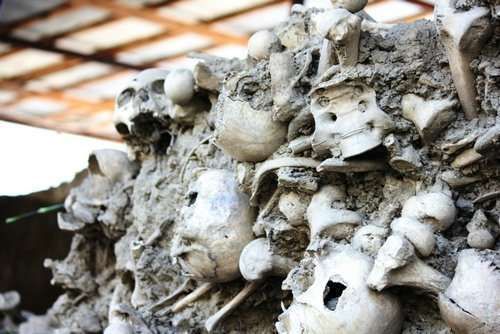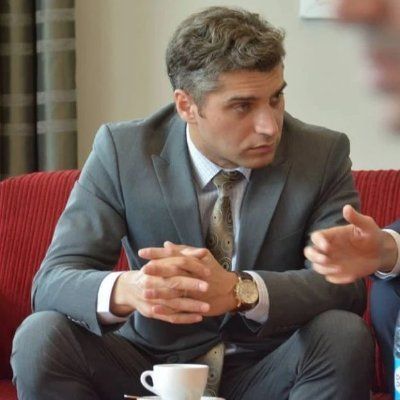New discoveries shed light on March Genocide coacted by Armenians & Bolsheviks

Driven by the vision of creating "Greater Armenia," Armenians carried out mass killings of Azerbaijanis between 1905 and 1907. These massacres began in Baku and spread throughout Azerbaijan, including in what is now Armenia, leading to the destruction of hundreds of settlements and the brutal deaths of thousands of Azerbaijanis.
Behind all of this was the manifestation of a sick ideology, the illusion of a "Greater Armenia" stretching from sea to sea, or more clearly, the embryos of the fabricated concept of "Miatsum." This ideology was not the product of just a few years, but of centuries, and it began to manifest itself.
Finally, during World War I and the subsequent Russian Revolutions in 1917, Armenians tried to further their intentions under the Bolshevik banner. Starting in March 1918, the Baku Commune, under the guise of fighting counter-revolutionaries, initiated a campaign of ethnic cleansing to remove Azerbaijanis from the Baku Governorate. Tens of thousands of Azerbaijani civilians were murdered based on their ethnicity and religion, and settlements, along with cultural sites such as mosques and cemeteries, were obliterated. The violence continued, with Armenian nationalists carrying out further massacres, looting, and ethnic cleansing in areas like Garabagh, Zangazur, Nakhchivan, Shirvan, and Irevan.
As the Armenian Dashnak-Russian Bolshevik forces were about to initiate the March massacre against Azerbaijanis, the Mensheviks, Social Revolutionaries, Kadets, and Dashnaks all provided their full support, or rather, defended the Baku Soviet led by Stepan Shaumyan. No Azerbaijanis were accepted into the "revolutionary" army created by Armenian Korganov, who headed the Military-Revolutionary Committee of the Baku Soviet. Instead, Armenians were recruited into this newly formed army and heavily armed. This fact was also acknowledged by Armenian authors themselves.
On March 31, the Revolutionary Defense Committee was formed by the Bolsheviks to take on the entire struggle. The committee included P. Caparidze, G. Korganov, I. Sukhartev (a left-wing Socialist Revolutionary), and Stepan Shaumyan. During the days of the March battles in Baku, the head of the Bolshevik detachment was N. Ananchenko, and the commissioner was S. Martikyan. To engage Armenian national groups in the fight against the Azerbaijani population and to involve Russian and Armenian workers who followed the right-wing Socialist Revolutionaries and the Dashnaks, the Revolutionary Defense Committee invited representatives from these parties as well. Given the active presence of Armenian Dashnak-Russian Bolshevik armed groups in Baku, Azerbaijanis had to take self-defense measures and were forced to resort to arms.
The Azerbaijan Democratic Republic took steps to address these atrocities, especially the events of March 1918. On July 15, 1918, the Council of Ministers established a commission to investigate the tragedy. This commission focused on the March genocide, examining the crimes committed in Shamakhi and the Irevan Governorate. Additionally, a special department within the Ministry of Foreign Affairs was formed to bring international attention to the issue. In 1919 and 1920, the Azerbaijan Democratic Republic commemorated March 31 as a day of national mourning, marking the first political acknowledgment of the genocide. However, after the fall of the Republic, these efforts were halted.
It was not until 80 years later, in 1998, that Azerbaijan’s then-president, Heydar Aliyev, issued the Decree "On the Genocide of Azerbaijanis," offering a formal political evaluation of these tragic events. The decree highlighted the systematic genocide of Azerbaijanis from the 19th to the 20th centuries, including the March 1918 massacre. The decree declared March 31 as the "Day of the Genocide of Azerbaijanis."
The National Leader of Azerbaijan emphasized the importance of bringing global awareness to the genocide and achieving political and legal recognition. Despite the challenges, he urged the continuing effort to correct the historical narrative that had been distorted by Armenian propaganda.
In recent years, research has uncovered new facts and documents related to the genocide. One significant discovery was the mass grave found in the city of Guba, which is a gruesome testament to the events of 1918. Excavations in 2007 revealed that over 400 bodies, including those of women, children, and elderly men, were buried at the site. The remains belonged not only to Azerbaijanis but also to other ethnic groups, such as Lezgins, Jews, and Tats. In 2009, the Azerbaijani government approved plans for a memorial to honor the victims of the Guba massacre. This discovery and subsequent investigations have helped further document the scale of the genocide committed against the Azerbaijani people.
Here we are to serve you with news right now. It does not cost much, but worth your attention.
Choose to support open, independent, quality journalism and subscribe on a monthly basis.
By subscribing to our online newspaper, you can have full digital access to all news, analysis, and much more.
You can also follow AzerNEWS on Twitter @AzerNewsAz or Facebook @AzerNewsNewspaper
Thank you!

